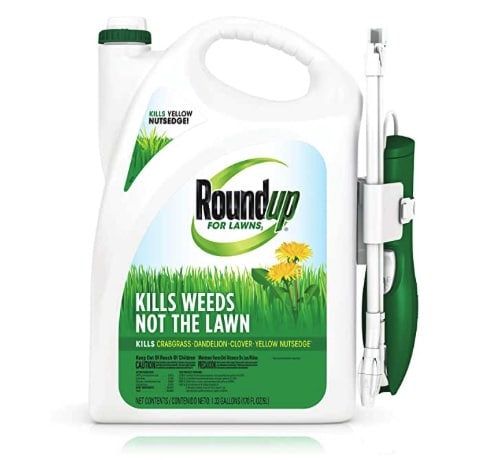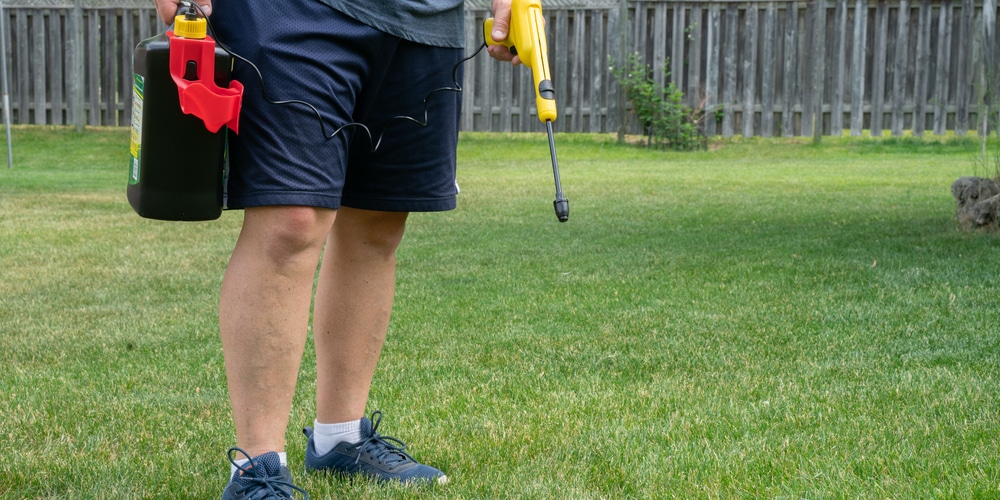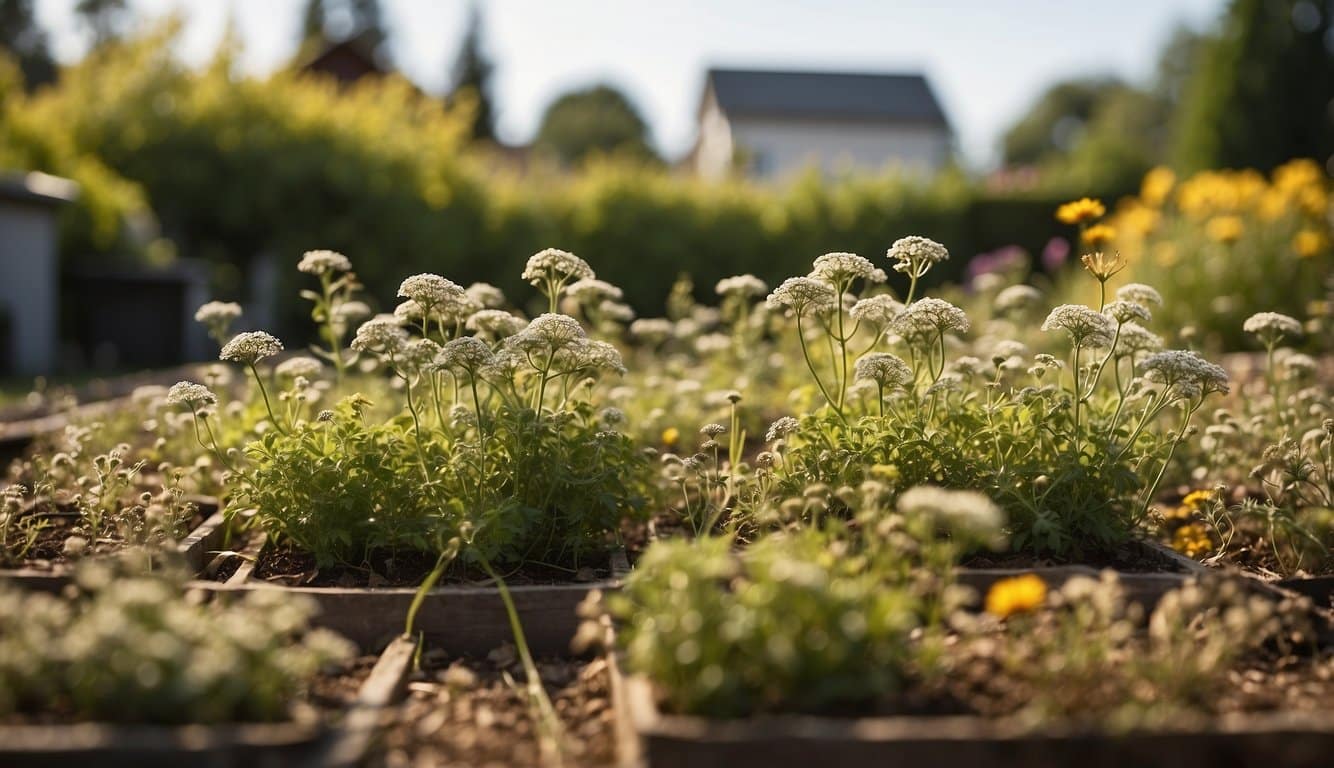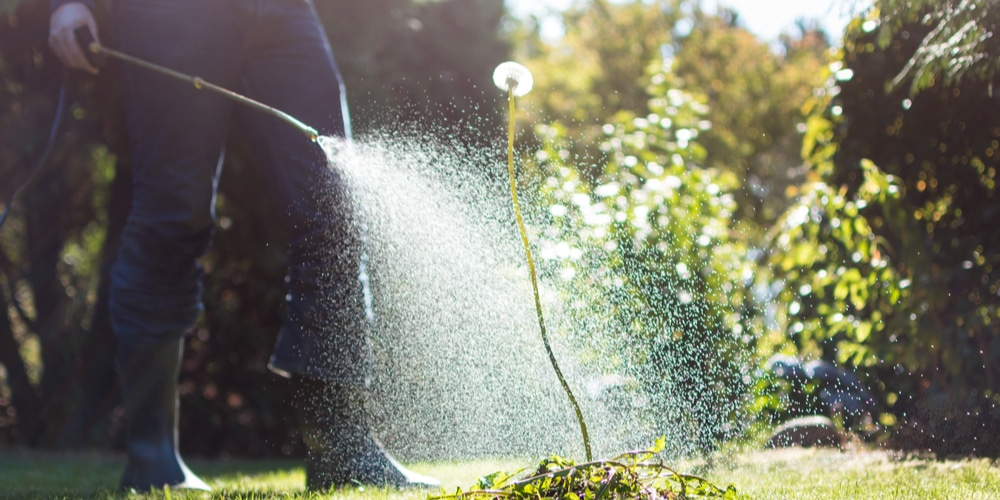| Active Ingredient | Glyphosate | Glyphosate |
| Concentration | Varies by product version, but generally high concentration of glyphosate. | Varies, with several formulations offering different concentrations of glyphosate and other ingredients. |
| Type of Herbicide | Non-selective, systemic herbicide. Kills almost all vegetation it contacts. | Non-selective, systemic herbicide. Designed to kill a broad range of weeds and grasses. |
| Effectiveness | Highly effective in killing most types of weeds and grasses. Acts by inhibiting a specific enzyme pathway necessary for plant growth. | Very effective against a broad spectrum of weeds, including perennials, annuals, and woody plants. |
| Application Method | Can be applied using a sprayer. Ideal for spot treatment or large areas. Requires thorough coverage for best results. | Applied using a sprayer for spot treatments, edging, and large areas. Different formulations may come with ready-to-use wands or concentrate for dilution. |
| Time to See Results | Visible effects in 2 to 4 days, with complete weed death in 1 to 2 weeks, depending on conditions. | Results can be seen as quickly as 3 hours, with complete weed kill in 1 to 2 weeks, depending on the formulation and environmental conditions. |
| Residual Activity | Does not leave a residual effect in the soil. Plants can be replanted shortly after the weeds have died. | Generally, does not have a long-lasting residual effect, allowing for replanting a few days after application, depending on the formula. |
| Safety for Pets and Humans | When used according to label directions, it is safe for pets and humans once dry. Always follow safety precautions and wear protective gear during application. | Considered safe for pets and humans once it has dried. Follow label instructions carefully and use protective gear when applying. |
| Environmental Impact | Similar to Roundup, concerns have been raised about potential environmental impact, including effects on non-target plants and aquatic toxicity. Use responsibly and follow local regulations. | Concerns about glyphosate’s impact on the environment and non-target species, including potential aquatic toxicity and harm to beneficial insects. It’s important to use according to guidelines and consider local wildlife and waterways. |
| Cost | Generally, comparable to Roundup but may vary based on concentration and quantity purchased. | Pricing can vary widely based on the formula, packaging, and where it’s purchased. Sometimes more expensive due to brand recognition. |
In the world of weed control, two herbicides have risen to be household names for gardeners and landscapers alike: Killzall and Roundup. Both have been designed to tackle unwelcome vegetation, but they carry distinct differences that may influence a consumer’s choice.
The active ingredient in both is glyphosate, a popular systemic herbicide known for its effectiveness in killing weeds. However, concentration levels and additional compounds play a role in how each product performs.
Comparing these two can help potential buyers make an informed decision that suits their specific gardening needs.
While Killzall presents itself with a no-frills approach, boasting a higher concentration of glyphosate at 41%, Roundup’s formulation includes a lower percentage of glyphosate accompanied by the addition of diquat, enhancing its potency.
Consumers frequently consider the rain-fast property of these herbicides, which denotes their ability to remain effective even after rainfall. This aspect, along with the safety profile, environmental impact, and ease of application, are key criteria that differentiate these products on the market.
With these factors at the forefront, gardeners and landscapers weigh their options, aiming to eliminate weeds without causing undue harm to the environment.
Key Takeaways
- Killzall and Roundup are popular herbicides with varying levels of glyphosate.
- Roundup’s formula includes other compounds alongside glyphosate to enhance effectiveness.
- Safety, environmental impact, and rain-fast properties are crucial considerations for users.
Overview of Killzall and Roundup
Killzall and Roundup are prominent herbicides used extensively for weed control. They share a common active ingredient, glyphosate, which is a broad-spectrum systemic herbicide.
Killzall: This herbicide is noted for its high concentration of glyphosate, around 41%. It is formulated to target a variety of weeds and grasses.
Killzall offers no frills but does its job effectively, causing plant death typically within 1 to 3 weeks. It’s available in various sizes, including a 1-gallon concentrate, which can cover a significant area.
| Killzall Key Features |
|---|
| High glyphosate concentration |
| No additional active compounds |
| Results within 1-3 weeks |
| Various size options available |
Roundup: A well-known name in weed control, Roundup presents a range of products with differing formulations.
An important distinction of some Roundup products is the combination of glyphosate, which ranges from 18% to 50%, and diquat, another herbicidal compound. This blend not only tackles existing weeds but may also prevent future growth.
Roundup’s product selections often include comfort wands and other applicators designed for user convenience.
| Roundup Signature Features |
|---|
| Glyphosate with optional diquat |
| Preventative options available |
| Applicator variety for ease of use |
| Broad product range |
It is crucial for consumers to choose between Killzall and Roundup based on the specific needs of their weed control tasks and preferences for additional features such as ease of application or long-lasting effects.
Active Ingredients Comparison
When assessing the herbicidal capabilities of Killzall and Roundup, it is crucial to understand their respective active ingredients, as these chemicals are the primary agents responsible for weed control.
Killzall features glyphosate as its predominant herbicidal component. Specifically, it contains a 41% concentration of glyphosate, which classifies it as a non-selective herbicide, meaning it has the ability to kill most types of weeds and grasses upon application.
Roundup, on the other hand, also utilizes glyphosate as its main ingredient but at a lower concentration of 18%. Additionally, Roundup is formulated with 0.73% diquat, another herbicidal substance.
| Herbicide | Main Active Ingredient | Concentration | Secondary Ingredient | Secondary Concentration |
|---|---|---|---|---|
| Killzall | Glyphosate | 41% | – | – |
| Roundup | Glyphosate | 18% | Diquat | 0.73% |
Both herbicides are known for their rain-fast properties, which ensure that their effectiveness remains intact even after rainfall.
This characteristic is particularly beneficial for gardeners and farmers who require reliable weed control that can withstand weather variations.
Effectiveness in Weed Control
When assessing the effectiveness of Killzall and Roundup in weed control, both products demonstrate robust capabilities.
These herbicides are post-emergent and non-selective, meaning they are designed to eliminate a variety of weeds and grasses after they have surfaced.
Killzall Herbicide
- Active Ingredient: Glyphosate
- Function: Absorbed through the foliage and translocated to the root system
- Target: Broad range of weeds and grasses
- Application: Post-emergent use, requires thorough coverage
Killzall utilizes glyphosate as its primary component to eradicate weeds effectively. The chemical is absorbed through the foliage, then transported throughout the plant, including the roots, for total control.
Roundup Herbicide
- Active Ingredient: Glyphosate (concentrations can vary)
- Formulation: Available in different concentrations, including a super concentrate
- Mode of Action: Targets an enzyme pathway specific to plants
- Surfactants: Contain compounds to enhance adherence to leaves
Roundup is synonymous with glyphosate-based weed control and often includes surfactants that help the product cling to plant leaves.
Through disrupting an enzyme pathway unique to plants, Roundup ensures that only the plants it contacts are affected, without harming nearby wildlife when used as directed.
Both Killzall and Roundup take some time to show visible results with complete weed death occurring over a period of days to weeks.
For gardeners and landscapers seeking comprehensive weed management, these products offer effective solutions when applied correctly and according to their individual instructions.
Environmental and Health Considerations
When assessing herbicides like Killzall and Roundup, one cannot overlook the environmental and health considerations. These factors are crucial in determining the safety and impact of these weed control products.
Glyphosate is the primary active ingredient in both Roundup and Killzall, with Killzall usually featuring a higher concentration—41% compared to Roundup’s 18%.
The environmental fate of glyphosate is a matter of consideration; although it binds tightly to soil particles, reducing leaching potential, its persistence in the environment can be of concern.
Microorganisms play a role in degrading glyphosate in both soil and water, limiting its movement and potential accumulation.
From a health perspective, Roundup’s inclusion of diquat—another herbicidal compound—adds complexity, and the potential health impacts are a subject of debate.
The International Agency for Research on Cancer has labeled glyphosate as a probable carcinogenic to humans, leading to an increased interest in alternative, non-glyphosate herbicides.
Both products are designed to be rainfast, with Roundup becoming rainproof in 30 minutes, while Killzall requires up to 2 hours.
This characteristic emphasizes the products’ resilience to weather, which could potentially influence environmental exposure and degradation rates.
Frequently Asked Questions
When comparing Killzall and Roundup, gardeners often inquire about the efficacy, mixing ratios, expected results, lasting effects, safety, and environmental concerns, as well as exploring non-chemical weed control options. These are important considerations for achieving desired outcomes while being mindful of the environment.
What are the primary differences between Killzall and Roundup in terms of efficacy?
Killzall and Roundup both contain Glyphosate, a potent herbicide. The main difference lies in the action speed.
Roundup claims to show visible results within 9 to 12 hours due to its FastAct Technology, whereas Killzall may take up to 1 to 2 weeks, with some cases stretching to 3 weeks to fully eradicate weeds.
How does the mixing ratio for Killzall compare to that of Roundup?
The mixing ratio for herbicides can vary between products, even when they contain the same active ingredient.
Both Killzall and Roundup provide specific instructions on their labels for mixing, which should be followed accurately to ensure both effectiveness and safety. However, as these ratios can be updated over time, users should always refer to the product packaging for the most current information.
What are the expected results when using Killzall as opposed to Roundup?
Users can expect Killzall to kill weeds and grasses down to the root, ensuring a complete removal. Roundup offers a similar result, with the added advantage of FastAct Technology for quicker visibility of the results.
That is where one can see the effect of the treatment in less than half a day, while Killzall may take longer to observe the changes.
Can Killzall Extended Control provide longer-lasting results than traditional Roundup?
Killzall Extended Control is designed to offer longer-lasting weed prevention, claiming to prevent new growth for an extended period after application.
It may provide a longer respite from weeds compared to traditional Roundup formulations, which focus on immediate eradication rather than extended control.
What are the safety and environmental implications of using Killzall versus Roundup?
The safety and environmental impact of using Glyphosate-based products like Killzall and Roundup can be significant.
It is crucial to follow the labeled instructions closely to minimize any potential harm to the user, non-target plants, and wildlife.
The environmental implications, including potential water contamination and effects on pollinators, remain a concern amongst users and researchers alike.
Are there non-chemical alternatives to Killzall and Roundup that effectively control weeds?
Non-chemical alternatives for weed control include mechanical removal, mulching, solarization, and the use of natural herbicides like vinegar-based solutions.
These methods may require more labor or frequent application, but they offer a chemical-free option for gardeners looking to reduce their environmental footprint and avoid the use of traditional herbicides.



